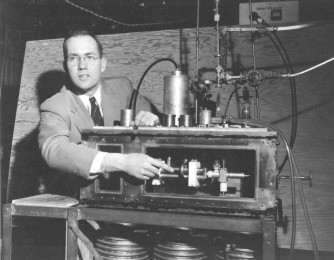 The boffin who laid the foundations for the development of the laser has died. Charles Townes was 99.
The boffin who laid the foundations for the development of the laser has died. Charles Townes was 99.
Townes who won the Nobel Prize for Physics in 1964 is best known as the “inventor” of the laser but he was also a pioneer in the field of infrared astronomy and was the first to discover water in space.
He first built a maser in the mid-1950s, which used microwave amplification rather than light.
At the time Gordon Gould at ARPA and Ted Maiman at Hughes Labs were working on similar research in the late 1950s. I Maiman who built a practical laser in 1960, but he used the published research of Townes.
Townes shared his 1964 Nobel Prize with Russian scientists N. G. Basov and Aleksandr Prokhorov because they were also working on the laser in the Soviet Union concurrently and independently of Townes.
Later in his life, he became famous for suggesting that one-day science and religion would one day merge, revealing the secrets of creation.
The committed Christian told some Harvard students: “I look at science and religion as quite parallel, much more similar than most people think and that in the long run, they must converge. It’s a fantastically specialized universe, but how in the world did it happen?”
He was honoured in 2005 with the Templeton Prize for contributions to “affirming life’s spiritual dimension.”
Townes never really stopped working and would show up at Berkeley until he became unwell last year.
He did live long enough for his laser to be turned into the sci-fi weapon that it was touted to be in the 1960s, although not long enough to see them strapped to sharks.









